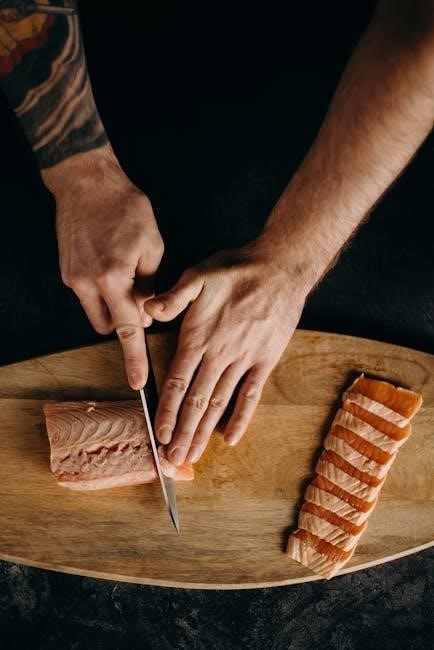
ortega method 2×2 pdf
The Ortega Method is an intermediate-level approach for solving a 2×2 Rubik’s Cube efficiently. It involves orienting the first layer, aligning the last layer, and permuting both layers simultaneously. This method uses 12 algorithms and is ideal for speedcubers aiming to improve their solve times consistently.
Overview of the Ortega Method
The Ortega Method is a popular intermediate-level technique for solving 2×2 Rubik’s Cubes. It was developed to provide a more efficient and algorithmic approach compared to beginner methods. This method is divided into three main steps: orienting the first layer, orienting the last layer (OLL), and permuting both layers (PBL). The Ortega Method relies on a set of 12 short and efficient algorithms, making it ideal for speedcubers aiming to reduce their solve times. One of its key advantages is the ability to solve the cube in a “color-neutral” way, meaning solvers can start with any face as the starting point. The method is particularly effective for those who have already mastered basic 2×2 solving techniques and are looking to improve their efficiency. Resources like the Ortega Method 2×2 PDF guide provide detailed algorithms and diagrams, while video tutorials offer visual demonstrations to help learners master the steps. This method is widely regarded as a stepping stone to advanced solving techniques and is recommended for those seeking consistent and fast solves.
Benefits of the Ortega Method for 2×2 Solving
The Ortega Method offers several advantages for 2×2 Rubik’s Cube solvers, particularly for those transitioning from beginner to intermediate levels. Its efficiency is a standout feature, as it typically requires fewer moves compared to other methods, leading to faster solve times. The method’s algorithmic approach ensures consistency and reduces the likelihood of errors during the solving process. One of the key benefits is its “color-neutral” solving capability, allowing solvers to start with any face as the starting point, which enhances flexibility and reduces reliance on a specific starting orientation. Additionally, the Ortega Method serves as an excellent foundation for advanced techniques, such as the EG method, making it a valuable stepping stone for further skill development. The availability of resources like the Ortega Method 2×2 PDF guide and video tutorials further enhances its accessibility, providing learners with clear and structured instructions. Overall, the Ortega Method is praised for its efficiency, simplicity, and effectiveness in improving solve times and consistency.
History and Development of the Ortega Method
The Ortega Method was developed by Michael Ortega as an efficient approach for solving 2×2 Rubik’s Cubes. It emerged as a response to the need for a more streamlined method that could be mastered by intermediate solvers. Over time, the method gained popularity due to its simplicity and effectiveness, particularly among speedcubers. The Ortega Method builds on earlier techniques but introduces a more optimized algorithm set, reducing the number of moves required to solve the cube. Its development involved contributions from other prominent cubers, such as Gaetan Guimond, who helped refine the algorithms and strategies. The method was further popularized through online resources, including the Ortega Method 2×2 PDF guide, which provides detailed algorithms and step-by-step instructions. This guide has become a go-to resource for many learners, enhancing the method’s accessibility and adoption worldwide. The Ortega Method’s evolution reflects the collaborative nature of the speedcubing community and its continuous pursuit of efficiency and innovation.

Step-by-Step Guide to the Ortega Method
The Ortega Method is a 3-step process for solving a 2×2 cube. It begins with orienting the first layer, followed by orienting the last layer (OLL), and concludes with permuting both layers (PBL). This method is known for its efficiency and simplicity.
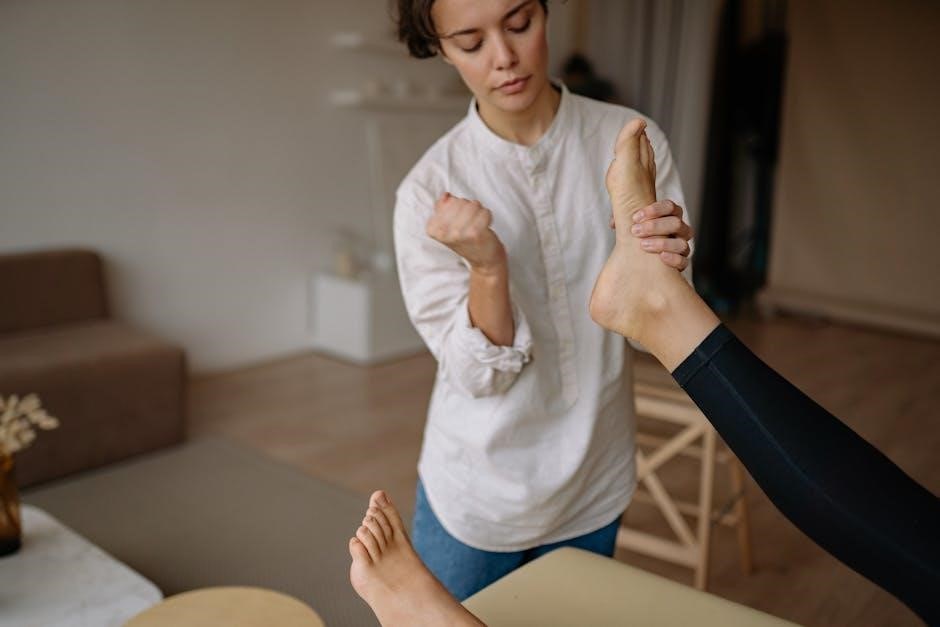
Step 1: Orienting the First Layer
The first step in the Ortega Method involves orienting the first layer of the 2×2 cube. This step is foundational and sets the stage for the rest of the solve. The goal is to solve one face of the cube completely, ensuring all stickers on that face are oriented correctly. Typically, this is done with the white face, but the method is color-neutral, meaning any face can be chosen as the starting point. To achieve this, you will use basic 2×2 moves such as R, L, U, and D to align the stickers. This step requires focus on both the orientation and the permutation of the pieces. Once the first layer is fully oriented, you can move on to the next step with confidence. Mastering this step is crucial, as it directly impacts the efficiency of the subsequent steps, particularly the OLL and PBL stages.
Step 2: Orientation of the Last Layer (OLL)

The second step in the Ortega Method is the Orientation of the Last Layer (OLL). At this stage, the goal is to orient the remaining pieces on the last layer so that all stickers on the upward-facing side are correctly aligned. This step is crucial as it sets up the cube for the final permutation step. During OLL, you will use a set of algorithms designed to orient the corners and edges without disturbing the first layer, which has already been solved. These algorithms are shorter and more efficient compared to those used in other methods, making the Ortega Method particularly popular among intermediate solvers. It is important to focus on maintaining the orientation of the first layer while executing these moves. Once the last layer is fully oriented, you will be ready to move on to the final step: permuting both layers to solve the cube completely. Mastery of OLL is essential for achieving faster solve times and ensuring a smooth transition to the PBL step.

Step 3: Permutation of Both Layers (PBL)
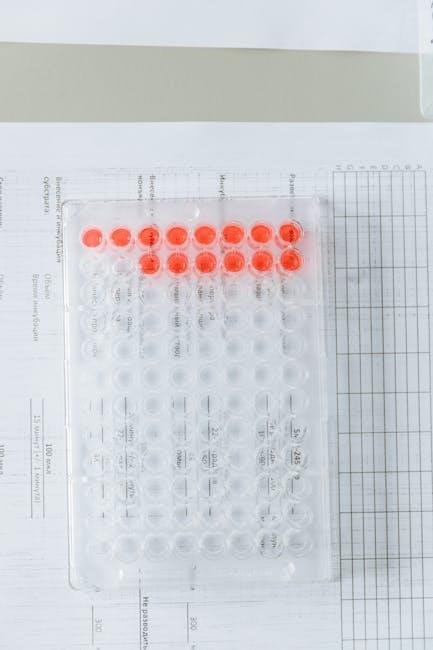
The final step in the Ortega Method is the Permutation of Both Layers (PBL). At this point, the first layer is fully solved, and the last layer is correctly oriented. The PBL step involves permuting the pieces on both layers to ensure all corners and edges are in their correct positions. This step is executed using a set of algorithms that simultaneously adjust the positions of the pieces on both the first and last layers. The key to mastering PBL is to recognize the specific cases that require permutation and to execute the corresponding algorithms efficiently. Unlike OLL, which focuses solely on orientation, PBL deals with the alignment of pieces, ensuring that each piece is in its correct final position. It is important to maintain focus during this step, as improper execution can disrupt the already solved first layer. Once both layers are correctly permuted, the cube will be fully solved. PBL is a critical step in the Ortega Method and is essential for achieving a complete and accurate solution.
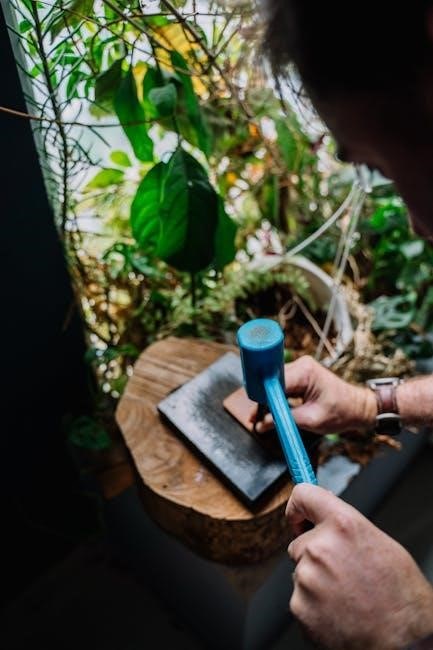
Understanding the Algorithms
The Ortega Method relies on a set of core algorithms to solve the 2×2 cube efficiently. These algorithms are divided into two main categories: OLL (Orientation of the Last Layer) and PLL (Permutation of the Last Layer). OLL algorithms focus on orienting the final layer’s corners, while PLL algorithms handle permuting them into their correct positions. The method uses 7 OLL and 5 PLL algorithms, each designed to address specific cases encountered during the solving process. These algorithms are simple yet effective, making them ideal for intermediate-level solvers aiming to improve their speed and accuracy.
OLL Algorithms for the Ortega Method
The Ortega Method employs 7 essential OLL (Orientation of the Last Layer) algorithms to orient the final layer’s corners. These algorithms are designed to address specific cases where the corners are misoriented. Each OLL algorithm is short and efficient, making them ideal for intermediate solvers. The most common OLL algorithms include sequences like R U R’ U’ R U2 R’ and F (R U R’ U’) F’, which handle cases such as all corners facing the same direction or alternating orientations. These algorithms are crucial for transitioning smoothly to the PBL step. They are memorized based on the cube’s orientation and the solver’s preferences. Practicing these OLL algorithms regularly is key to mastering the Ortega Method. By understanding and executing them flawlessly, solvers can ensure the last layer is properly oriented before permuting the corners. Consistent practice helps reduce solve times and improves overall efficiency.
PLL Algorithms for the Ortega Method
The Ortega Method utilizes 5 core PLL (Permutation of the Last Layer) algorithms to permute the corners of the cube. These algorithms are used in the final step after the last layer has been oriented. Each PLL algorithm addresses specific corner permutation cases, such as adjacent swaps or diagonal swaps. Common PLL algorithms include sequences like R2 U R’ U’ R U’ R’ U D R’ U2 R D’ and M2 U M2 U2 M2 U M2, which are designed to permute the corners efficiently. These algorithms are shorter and more straightforward compared to other methods, making them ideal for intermediate solvers; They are typically memorized based on the cube’s orientation and the solver’s preference. Mastering these PLL algorithms is crucial for completing the Ortega Method efficiently. Regular practice helps improve execution speed and accuracy, ensuring that the cube is solved in the fewest moves possible. By combining these algorithms with the OLL steps, solvers can achieve a smooth and efficient solving process.
Common Mistakes to Avoid
When using the Ortega Method to solve a 2×2 Rubik’s Cube, there are several common mistakes that can hinder progress and increase solve times. One of the most frequent errors is misorienting the first layer, which can lead to issues in later steps. Solvers often rush through the OLL (Orientation of the Last Layer) step, causing incorrect alignments that require additional moves to fix. Another mistake is executing algorithms too quickly, which can result in missed or reversed moves. This is particularly problematic during the PBL (Permutation of Both Layers) step, where precision is key.
Additionally, many solvers struggle with corner orientation during the OLL step, often neglecting to check the orientation of all four corners before proceeding. This oversight can lead to a partially solved cube that requires reorientation. To avoid these mistakes, it’s essential to practice each step slowly and deliberately, ensuring accuracy before increasing speed. Regular review of algorithms and consistent practice can help build muscle memory and reduce errors; Over time, these habits will lead to faster and more efficient solves.
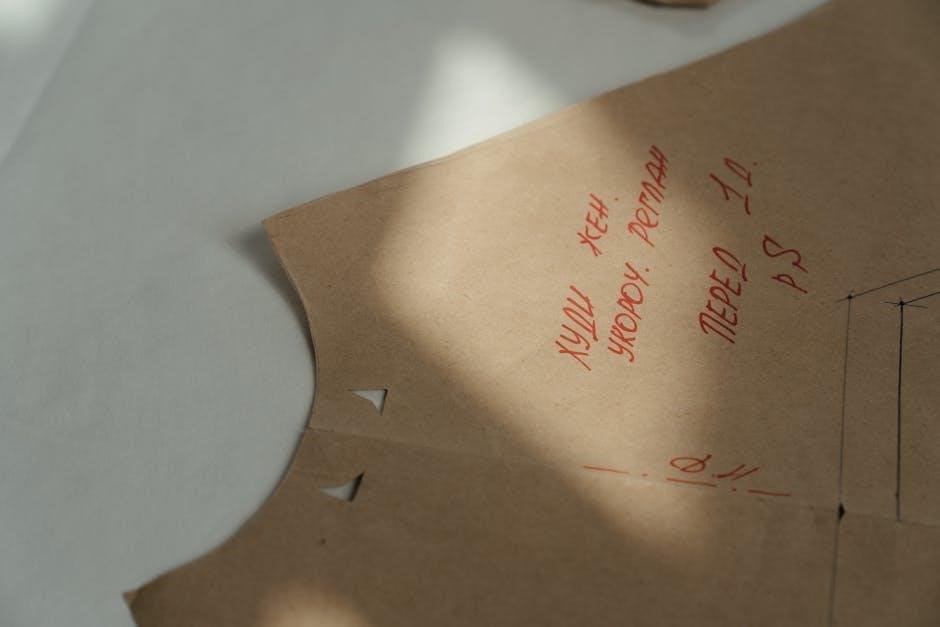
Advanced Techniques
The Ortega Method offers advanced techniques to enhance 2×2 solving efficiency. These include optimizing solve times through algorithm mastery and refining PBL execution. Advanced algorithm execution ensures faster and smoother transitions between steps, leading to improved overall performance.
Optimizing your solve time with the Ortega Method requires a combination of algorithm mastery, efficient execution, and strategic planning. One key approach is to minimize the number of moves by learning to recognize and solve cases quickly. This involves practicing muscle memory for common OLL and PLL algorithms, ensuring they can be executed in the fewest possible moves. Additionally, improving finger dexterity and reducing paused thinking during solves can significantly lower overall times. Many cubers also benefit from learning advanced techniques such as “color neutrality,” which allows starting the solve from any face, thus reducing the need for initial rotations. Regular practice with timers and analysis of solve videos can help identify inefficiencies. Furthermore, memorizing optimal algorithm sequences for specific cases ensures that you’re always using the shortest path to solve the cube. By refining these skills, cubers can achieve faster and more consistent times using the Ortega Method. Mastering the Permutation of Both Layers (PBL) step in the Ortega Method is crucial for efficiently solving the 2×2 cube. This step involves simultaneously permuting the corners of both the top and bottom layers to achieve the final solved state. PBL is executed after the last layer has been oriented, ensuring all pieces are in their correct positions. To excel at this step, it’s essential to memorize the specific algorithms designed for corner permutations, which include adjacent swaps and diagonal alignments. Practicing these algorithms repeatedly will build muscle memory, allowing for faster and more intuitive execution during solves. A key challenge in PBL is maintaining orientation while permuting, as improper execution can disrupt the already solved layers. Regular practice and review of PBL cases will help refine your skills and reduce errors. Additionally, focusing on recognizing and executing these algorithms quickly can significantly improve overall solve times. Consistent practice and careful attention to cube rotations will ensure mastery of this critical step in the Ortega Method. Advanced algorithm execution in the Ortega Method involves refining the use of OLL and PBL algorithms to achieve faster and more efficient solves. This step requires a deep understanding of the algorithms and their applications in various scenarios. By mastering these advanced techniques, solvers can reduce their average solve times and improve consistency. One key aspect of advanced execution is the ability to recognize and apply the correct algorithms quickly. This is achieved through extensive practice and muscle memory development. Additionally, understanding how to optimize algorithm sequences can further enhance solving efficiency. Proper finger independence and precise cube control are also crucial for executing algorithms seamlessly. Regular practice and review of advanced algorithms will help refine skills and reduce errors. As solvers progress, they can explore more complex techniques to push their solving capabilities to the next level. This continuous improvement is essential for mastering the Ortega Method and achieving expert-level performance. Official Ortega Method 2×2 PDF guides provide detailed algorithms and step-by-step instructions for mastering the technique. Video tutorials and practice exercises are also available, offering visual and hands-on learning opportunities to refine your skills effectively. The Ortega Method 2×2 PDF is a comprehensive guide designed to help intermediate learners master the 2×2 Rubik’s Cube. It includes detailed algorithms for both the OLL (Orientation of the Last Layer) and PBL (Permutation of Both Layers) steps, along with diagrams and video links for each algorithm. The guide is structured to be user-friendly, with clear instructions and visuals to aid in understanding and execution. By following the PDF, learners can achieve an average solve time of around 20 moves, making it an efficient method for speedcubers. The guide also emphasizes a color-neutral approach, allowing solvers to begin with any face. This resource is widely regarded as one of the most effective tools for mastering the Ortega Method, providing a streamlined path to proficiency. Download the Ortega Method 2×2 PDF to unlock its full potential and enhance your cubing skills. Video tutorials are an essential resource for mastering the Ortega Method, offering visual guidance that complements the written and PDF guides. These tutorials provide step-by-step demonstrations of each algorithm, helping learners understand the proper execution of moves. Many videos focus specifically on the OLL and PBL steps, breaking down complex sequences into manageable parts. Platforms like YouTube host a variety of tutorials, some of which are linked directly in the Ortega Method PDF guide. These videos are particularly useful for beginners who may struggle with cube notation or for intermediate solvers aiming to refine their technique. By watching experienced cubers perform the algorithms, learners can identify common mistakes and improve their finger tricks. Additionally, video demonstrations often include tips for optimizing solve times and transitioning smoothly between steps. For those who prefer visual learning, these tutorials are an invaluable tool for mastering the Ortega Method and achieving faster, more efficient solves. Consistent practice is crucial for mastering the Ortega Method. Start with short, focused sessions to build muscle memory and improve speed. Use a timer to track your solve times and identify areas for improvement. Begin by practicing individual algorithms slowly and deliberately to ensure proper execution. Gradually incorporate scrambles from the Ortega Method PDF to simulate real-world solving scenarios. Focus on one algorithm at a time until it becomes second nature, then combine them seamlessly. Pay attention to finger independence and efficient move sequences to minimize wasted motions. Analyze your solve times to pinpoint bottlenecks and allocate practice time accordingly. Incorporate blind practice to enhance your understanding of cube orientation and corner permutations. For advanced learners, try solving the cube color-neutral to improve adaptability. Set achievable goals, such as reducing your average solve time or mastering a specific step, to stay motivated. Regular practice, even for a few minutes daily, will significantly enhance your proficiency in the Ortega Method. The Ortega Method offers an efficient and structured approach to solving a 2×2 Rubik’s Cube. By mastering its algorithms and consistent practice, cubers can achieve faster solve times and improved accuracy, making it a valuable tool for intermediate learners. The Ortega Method is a highly effective and streamlined approach for solving a 2×2 Rubik’s Cube, particularly suited for intermediate learners. Its structured, three-step process—orienting the first layer, aligning the last layer, and permuting both layers—provides a clear pathway to mastery. By focusing on just 12 essential algorithms, the method minimizes complexity while maintaining efficiency, making it ideal for speedcubers aiming to reduce their solve times. The availability of detailed PDF guides, video tutorials, and practice exercises further enhances the learning experience, ensuring that cubers can refine their skills consistently. Overall, the Ortega Method strikes a balance between simplicity and advanced techniques, making it a valuable resource for anyone looking to elevate their 2×2 solving abilities. With dedication and practice, cubers can harness the full potential of this method to achieve faster and more accurate solves. Mastering the Ortega Method requires consistent practice and patience. Start by memorizing the fundamental algorithms and gradually incorporate them into your solving routine. Begin with slower, deliberate movements to ensure accuracy, then focus on speed as muscle memory develops. Utilize the provided Ortega Method 2×2 PDF guide and video tutorials to reinforce your understanding. Set achievable goals, such as reducing your average solve time or mastering one algorithm at a time. Tracking progress through timers or solve trackers can also motivate improvement. Join online communities or forums to connect with other cubers for tips, encouragement, and challenges. Remember, every solved cube brings you closer to expertise. Stay committed, embrace challenges, and celebrate small victories along the way. With persistence, you’ll unlock the full potential of the Ortega Method and become a proficient 2×2 solver.Optimizing Your Solve Time
Mastering the PBL Step

Advanced Algorithm Execution

Resources for Learning
Ortega Method 2×2 PDF Guide
Video Tutorials and Demonstrations
Practice Tips and Exercises
Final Thoughts on the Ortega Method
Encouragement for Continued Practice